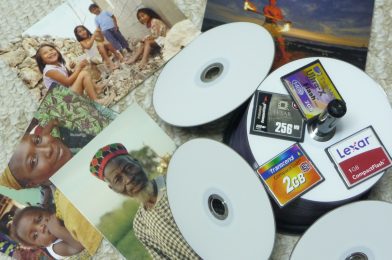Are you selling prints, DVDs, digital files, or the memories you capture?
Too often, photographers look only at the cost of making a photo—pushing the button. In the days of film, many of these same photographers would try and sell a 25¢ piece of paper. Both then and now, these photographers miss the point—the medium is only a vehicle.
Photographers of people sell moments. The better the photographer can raise the feelings in the beholder’s mind the monetary value of that image is increased.
The door-to-door vacuum cleaner salesman isn’t selling appliances but a clean house. The key for photographers is to realize they are not selling pictures but what those pictures capture. Even in advertising photos of products, the incredible images help capture a mood and create a craving in the audience in some way.
Photography has five stages in selling.
- Attention
- Interest
- Desire
- Need
- Action
You need to, in some way, have their attention first. There are many ways to get this. One of the best ways is through a referral from a happy customer. This is based on relationships. The relationship you as a photographer have built with a client and the excitement they have and want to share you with their friends is, in my book, the best way to get someone’s attention.
Great images will also get someone’s attention. These are often done through your advertising. Getting your work in front of someone to get their attention would be best.
The next step is creating an interest in your product. Your referral will use their testimonial to help you create interest. They will tell their friends about how you impressed them in some way.
Many photographers may have celebrities in their portfolio, and some photographers have exotic locations, and as you can see, these things create an interest in the photographer and their work.
This interest should lead to desire. This is where they start to inquire, want to know more, and are engaged with you. You must move them from seeing you as a commodity; otherwise, they will look for another photographer.
Instead, you have to establish a real need for your services. This is where your ability to demonstrate to them how you are the best choice for them. This may be how you communicate your ability to care for them, and you might explain this by just how attentive you are in the sales process.
Questions for yourself:
- Did you offer them something to drink?
- Did you listen and ask thoughtful questions based on what you heard them say?
- Did you have good eye contact with them?
- Did you greet them with a genuine smile?
- Are you conscious of their time and clear and concise in your answers to their questions?
If you establish your ability to meet their needs, it is on to action. The client wants to sign the contract and hand you the money to make it happen. If you seldom get to this stage where the client is taking the initiative to close the sale for you—then a real need for “you” was never established. Instead, you are seen as a commodity, and someone else can fill the market.




